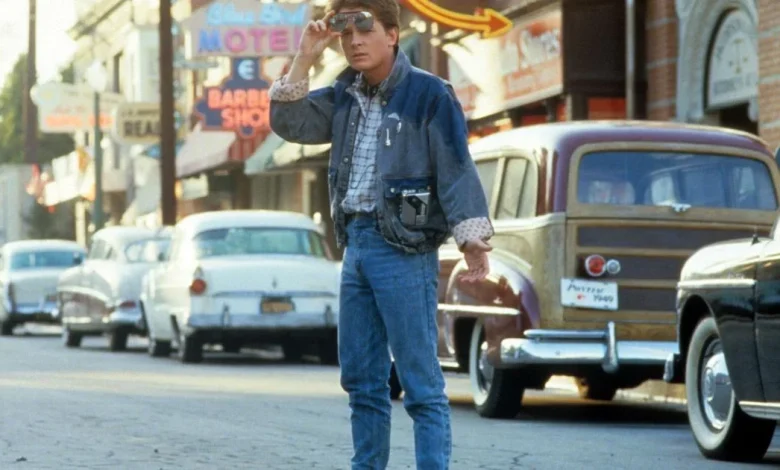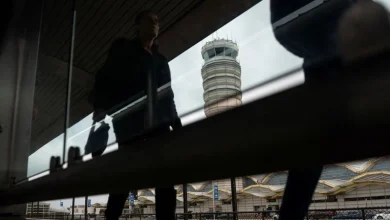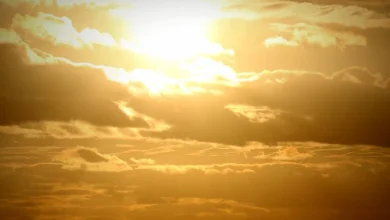From Hollywood to Housatonic: The Berkshires’ surprising link to ‘Back to the Future’

To mark its 40th anniversary, “Back to the Future” is returning to theaters nationwide — including the Beacon Cinema in Pittsfield — but the Berkshires’ connection to the blockbuster runs deeper than nostalgia.
In the late 1980s, special effects pioneer Douglas Trumbull, working out of an old mill in Housatonic, helped bring the film’s magic to life through a groundbreaking theme park ride that forever changed cinematic storytelling.
Douglas Trumbull, in 2013, was a special effects pioneer who moved to the Berkshires in the 1980s, creating a state-of-the-art workspace, Trumbull Studios.
Now, the magic of Robert Zemeckis’ classic is being revived again, with the film screening in select theaters across the country — including at the Beacon through Thursday.
When audiences first saw “Back to the Future” on July 3, 1985, they weren’t ready for the time-travel adventure that followed. But they loved it, launching a cultural phenomenon that would eventually extend to the Berkshires, where Trumbull built “Back to the Future: The Ride” and helped spark a small film industry of his own.
Trumbull, who died at the age of 79 in 2022, moved to the Berkshires in the 1980s, settling on a 50-acre estate in New Marlborough where he created a state-of-the-art workspace, Trumbull Studios.
He shared with The Eagle in 1988 why he settled here:
“The kind of work I like to do is experimental, and it takes a lot of time,” he said. “In Los Angeles, the entire business is geared for mass production, television shows, commercials, feature films. … I’ve been looking for an opportunity to slow down and have the chance to experiment inexpensively.”
A CULTURAL PHENOMENON
In 1985, “Back to the Future” became the highest-grossing domestic release of the year, earning more than $385 million worldwide on a $19 million budget and was nominated for four Academy Awards.
The film — directed by Zemeckis and starring Michael J. Fox, Christopher Lloyd and Lea Thompson — launched one of the biggest sci-fi franchises ever with two sequels.
Executive Spotlight: Diane Pearlman/Berkshire Film and Media Collaborative
Diane Pearlman, executive director of the Berkshire Film and Media Collaborative, called it groundbreaking. She added that the film’s time-travel elements changed the way people thought about their history.
“It made you think about things that hadn’t really been subject matter in a movie before,” Pearlman said.
“Back to the Future” wound up holding the top spot on the box office charts for 11 of its first 12 weeks, and it didn’t fall out of the top 10 until December, according to SlashFilm.
Robert Zemeckis’ “Back to the Future” was released on July 3, 1985. The film is being rereleased in theaters nationwide. “It’s what going to the movies should be about,” said Cory Jacobson, owner of Phoenix Theatres Beacon Cinema in Pittsfield.
Pittsfield resident Scarlett Smith attended the Phoenix Theatres Beacon Cinema screening of the 1985 film “Back to the Future” on Thursday. The film is being rereleased in theaters to celebrate the 40th anniversary of the blockbuster hit.
“Back to the Future” also captivated the music world with “The Power of Love” hitting No. 1 on the Billboard charts.
“The music was great,” said Cory Jacobson, owner of Phoenix Theatres Beacon Cinema in Pittsfield. “Everyone ran out and bought the cassette tape.”
A THRILLING RIDE
Following the success of “Back to the Future,” Universal Studios launched a multimedia franchise with theme park rides, a stage musical, animated series and video games.
Eugenie Sills — former director of administration for Trumbull’s company, Berkshire Motion Picture — called the “Back to the Future” ride one of the Berkshires’ great “economic development stories.” Sills is one of many who moved to the Berkshires to work for the company, and she has now lived in the area for 36 years.
When Sills arrived in 1988, she said there were about six people at the mill working for Trumball. Within six months, they had hired 250 people.
“It was not a great economic time, so it had a significant impact,” she said. “There was a lot of money coming into the Berkshires.”
Sills remembers locals coming to test the ride as well as a stream of celebrities and studio people, including Steven Spielberg, Don Johnson and Melanie Griffith.
Trumbull was contacted by Spielberg, who was a producer on the film, and Universal Pictures to direct and develop the ride.
“Back to the Future: The Ride” debuted at Universal Studios in Orlando in 1991 and opened at the Hollywood location in 1993 and in Osaka, Japan, in 2001. The U.S. ride closed in 2007, and the Japan ride bid farewell in 2016.
The ride ran for just under 4 minutes, cost $60 million to install and brought in an estimated gross revenue of $2 billion, according to notes that Trumbull gave to Jacobson.
The story setting up the adventure of the ride was that Biff Tannen had broken into Emmett “Doc” Brown’s newly constructed Institute of Future Technology and stolen a DeLorean. With Doc’s guidance, the eight passengers on the ride had to stop Biff from causing trouble.
Terry Holland, a filmmaker, actor and close friend of Trumbull’s, said there had never been a ride that had overcome the presentation challenges that Trumbull’s did.
Holland said that Trumbull felt that movies aren’t constrained by a cinema setting and that the ride was a more engaging cinema setting with a shorter run time.
“It changed the dynamic of what a movie theater is and he turned it into [the ride],” he said.
Pearlman, who worked with Trumbull on the Luxor Las Vegas Project, said he was on the cutting edge of thinking about how people could experience movies in a more immersive way. She remembers going on the ride in Hollywood and credits it with kickstarting a booming amusement park industry.
“It was unlike anything you’d ever experienced at an amusement park,” she said.
A VISIONARY
Made In The Berkshires | Douglas Trumbull: The wizard who creates alternative universes
Trumbull is described by many as a pioneer, visionary and creative who left a profound impact on the film industry. Holland said that Trumbull didn’t have a lot of quit in him and that he was a naturally competitive person.
“He liked to push the boundaries to make going to the movies something spectacular that you’d remember,” he said.
Trumbull became the lead mastermind behind the trippy finale for “2001: A Space Odyssey,” the eerie atmospherics of “Close Encounters of the Third Kind” and the very birth of the universe that opens “The Tree of Life.”
Jordan Hohman, vice president of project development for Phoenix Theatres, credits Trumbull for his innovation work with Magi, a high-resolution 120-frames-per-second 3D filmmaking technology. Magi also uses a curved screen that provides an immersive experience, and it was inspired by “Back to the Future: The Ride,” Hohman said.
“He can merge art and technology in a way that I don’t think anybody has,” he said.
Jacobson and Hohman met Trumbull in the summer of 2018, and Trumbull remained invested in what the Beacon Cinema was doing. Jacobson said that Trumbull was instrumental in the complex’s changes that include Dolby Atmos and high frame rates.
The complex honors Trumbull with a tribute before every film.
Phoenix Theatres Beacon Cinema in Pittsfield runs a Douglas Trumbull tribute before every film. Trumbull, who died at the age of 79 in 2022, moved to the Berkshires in the 1980s, settling on a 50-acre estate in New Marlborough that he made into a home and a state-of-the-art workspace, Trumbull Studios.
‘TIMELESS’
Forty years later, “Back to the Future” remains a significant part of American culture and Jacobson said that movies do this in a way that is difficult to do on television.
“You are watching this together [in a theater] and all of a sudden it kind of becomes a phenomenon,” he said.
The film has references and quotes that have lived on with “Great Scott” and “Where we’re going, we don’t need roads.” There is also Back to the Future Day on Oct. 21 every year, which commemorates the day when Marty and Doc go to the future in the second film.
The film is for all ages, and the acting has remained endearing over time, Pearlman said.
‘Jaws’ at 50: The blockbuster that changed movies — and still echoes in the Berkshires
“Good storytelling can survive the test of time,” she said.





